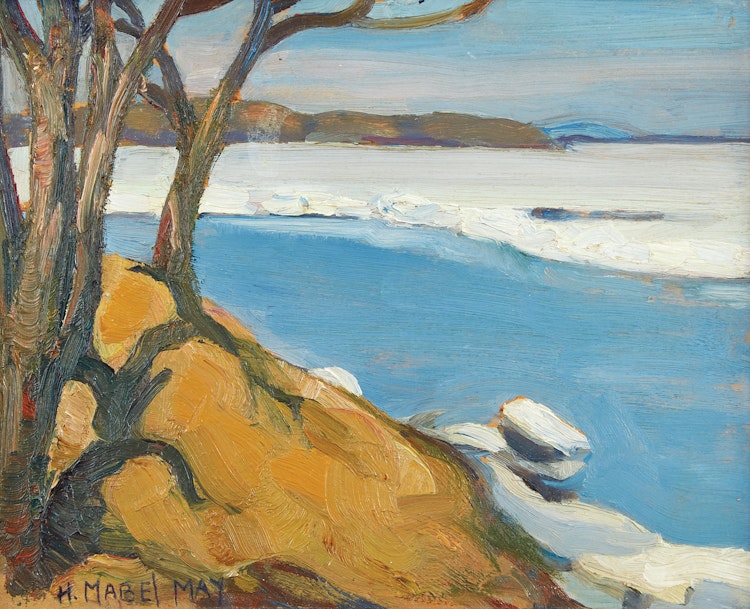Shoreline Landscape / Farm Scene by Henrietta Mabel May

Mabel May
Shoreline Landscape / Farm Scene
double-sided oil on panel
signed lower left; an unsigned farm landscape on the reverse
8.5 x 10.5 ins ( 21.6 x 26.7 cms )
Auction Estimate: $9,000.00 - $12,000.00
Price Realized $8,050.00
Sale date: May 25th 2017
Private Collection, Calgary
Evelyn Walters, The Beaver Hall Group and Its Legacy, Dundurn Press, Toronto, 2017, pages 109-12
Share this item with your friends
Henrietta Mabel May
(1877 - 1971) Beaver Hall Group, Canadian Group of Painters, ARCA
Mabel May was born in Westmount, Montreal in 1877. Although she displayed an early talent for painting, May did not enter art school until her twenty-fifth year. She enrolled in classes at the Art Association of Montreal which were then directed by RCA president, William Brymner. She excelled there, earning two annual scholarships. May received much encouragement from Brymner and expressed lifelong gratitude for his support.
Following studies at the AAM, she and fellow graduate, Emily Coonan, travelled to France to study. While in France, she became a devotee of the Impressionists Claude Monet and Renoir. She was also strongly attracted to the work of Matisse. She and Coonan travelled widely in Europe, visiting galleries, museums and sketching. She returned to Montreal with her European paintings, one of which was acquired by the National Gallery of Canada in 1913. During the war, she received a commission from the Canadian War Memorial to paint women working in a munitions factory. She completed several canvases on this theme. May was elected an associate of the Royal Canadian Academy in 1916.
With the intention of finding inexpensive studio space, May and fellow AAM graduates, Randolph Hewton, Edwin Holgate, and Lilias Newton rented a three-story house at 305 Beaver Hall Hill in 1920. Asking several colleagues from their AAM years to join them, they formed the Beaver Hall Group. They elected fellow Montrealler and friend, A.Y.Jackson to be their president. He exhibited with them and, in turn, invited them to participate in Group of Seven exhibitions. The Beaver Hall Group disbanded after only two years, but a core group of women artists continued to associate together for many years to come.
In 1933, Mabel May became a founding member of the Canadian Group of Painters. In 1938, she was appointed superintendent of Children's Classes at the National Gallery in Ottawa. While in Ottawa, she exhibited at James Wilson and Co gallery and returned to Montreal in 1947. Before she retired to Vancouver in 1950, she held a retrospective exhibition and sale of over 100 works at the Dominion Gallery. Her work can be found in the collections of Canadian institutions such as the Beaverbrook Art Gallery, Fredericton, N.B., the Montreal Museum of Fine Arts, and the National Gallery of Canada, Ottawa.
Ref:
A Dictionary of Canadian Artists,by Colin S. MacDonald, Published by Canadian Paperbacks, Ottawa, 1979

